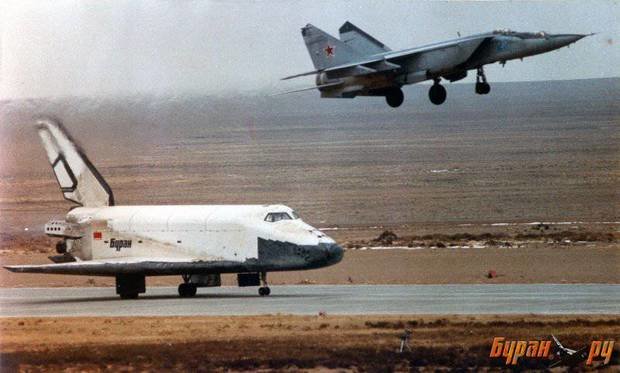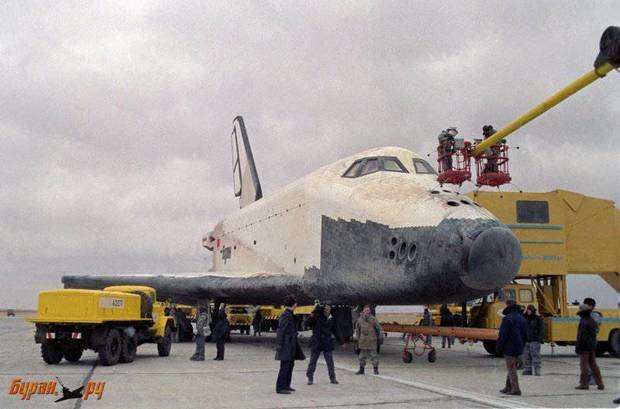Ural Sultanov: ''I was given general space training together with others''
About how the graduate of the Suvorov military school in Kazan becomes a test pilot of the legendary spacecraft Buran
The first and the only flight of Buran reusable spacecraft took place on November 15, 1988. After the collapse of the USSR the project was closed, but it is still perceived as a missed chance of Russian cosmonautics. Realnoe Vremya interviewed test cosmonaut Ural Sultanov, who took part in the last heroic episode of the Soviet conquest of outer space. Ural Sultanov was born 40 years before the only flight of Buran, in November 1948, in the village of Nikiforovo in the Alsheyevsky district of Bashkortostan. He studied in Kazan and still remembers the capital of Tatarstan with gratitude.
''You will fly everything — airplanes, helicopters and rockets''
Mr Sultanov, how did you get into the Buran project?
I was studying at school of test pilots. The graduation was planned at the end of 1978. Somewhere in August, the authorities of the flight test centre summoned me and asked, ''Where do you want to go then?'' I replied that I would go where I would be told, but if it would be a plant, I would like to go where they produced fighters. The authorities said, ''We have another offer, you will work at the Flight Research Institute. And if you give a good account of yourself, you will be selected for astronauts.'' I knew they were recruiting them, but I wasn't really interested. The guys who got in the group had already started to receive general space training at that time.
I decided to explain to my chief that I came here to fly aircrafts, not rockets. I was told, ''You will fly everything — airplanes, helicopters, and rockets.'' This option was totally fine with me. Almost all aircrafts that were in service and in operation in civil aviation were represented at the Flight Research Institute. The gave me Saturday and Sunday to decide and I almost blurted out: ''Why think? Goldfish goes into my own hands.'' But I did a smart look and said that I would think. On Monday, I said yes.
''An analogue of Buran was created to test it in the atmosphere''
Probably, there is a very big difference between flying the aircraft and the spacepalne such as Buran. What is it?
It is a completely different principle of entering the atmosphere and especially of landing. The thing is that Buran was intended to land like an aircraft — on wheels. But it had no engines to fly in the atmosphere. It almost could not fly horizontally. It had rocket engines that worked in the airless space, allowing it to maneuver in height and maintain stability. So what had to be done? Buran was landed due to the ballistic trajectory in the zone of possible landing near the airfield. The automation equipment or a pilot in manual control was to land it starting from 20 kilometres. We practiced manual control methods, mastered management laws and automatic control system. For this purpose, flying laboratories were created on the basis of Tu-154 LL and MiG-25 LL. They were given the same aerodynamic qualities as Buran had. The resistance of this aircraft corresponded to the resistance of Buran. Dynamics and trajectory of the maneuver was approximately the same. The differences were minimal.

''Buran was intended to land like an aircraft — on wheels. But it had no engines to fly in the atmosphere. It almost could not fly horizontally. It had rocket engines that worked in the airless space, allowing it to maneuver in height and maintain stability''. Photo: буран.ру
Did you have a chance to fly Buran?
I have already lost count of the flights on testbeds aircrafts. It was necessary to constantly train and not lose the skill of landing without an engine. But I flied Buran only once, in automatic mode. In order to test Buran in the atmosphere, they created its analogue. It had exactly the same aerodynamic shape, but there was a prolonged nose strut, the back was mounted with four engines AL-31, and it took off automatically. Twenty-four flights were performed, but I did not fly it. Although in principle, it had almost everything the same as Tu-154 LL did.
''I didn't want to be a pilot to sit in a station for six months''
Officially, you have been conferred the category ''a test cosmonaut''. Was you trained for flights into outer space?
Valentin Petrovich Glushko, who was for Korolev at his time, imposed the requirement that we had to undergo general space training. And together with the others I was given the general space training in the Cosmonaut Training Centre. But we did not sit there all the time because we had another job — we were to fly. They fully agreed with this, and if I had flights by the programme I left, flew and returned to the training centre.
Regular astronauts trained constantly. They were engaged in a lot of theoretical and physical work. But they did not pilot. They were in space and worked in the station. But we had to get back and forth to work out the safety of the flight. And on Buran all this was done for the first time.
Automatic control system was conceived by our scientists as the main, first control circuit, and the second control circuit — a pilot who sits on safety net. But we didn't quite agree with that. I agree that automation must be on any apparatus. If everything goes well, and I don't expect a trap, then I turn on automation.
Therefore, we have worked out a manual control system for ourselves and checked automatic system in flying laboratories. In the cockpit of the usual Tu-154, the instrument panel is the same on the right and left. But in our laboratory on the left there were regular devices, and on the right like on Buran. The control system was connected only after the engineers, who flew with me, gave confirmation. The central control knob was like on a fighter. And the aircraft behaved better with it than with the helm. Its stability was excellent. This Tu-154 had to be brought to the point in the area of the airport at an altitude of 10 km. I released the wheel, turned on the interceptors, reverses of side engines and went down vertically from 100 metres. I ran a manual system to work out the algorithm, which then was driven into a four-circuit computing centre on Buran.

''But I flied Buran only once, in automatic mode. In order to test Buran in the atmosphere, they created its analogue.'' Photo: буран.ру
''Finally the Soviet man saw how the money thrown out in space returned back''
How our Buran is different from the American shuttles, in your opinion?
The shuttle project is connected with the Strategic Defense Initiative of President Reagan. The Americans advertised their capabilities that with the help of shuttles they would bring to earth orbit platforms, on which there would be guns to intercept missiles that flied in their direction. But missiles are constantly improving, so I never believed in the realism of these plans. The Americans flipped us the bird, and we decided that we would show in return two.
And of course, Buran was different from the shuttles. There's a big barrel of fuel on the American shuttle. The shuttle takes off, and the barrel falls into the ocean. Our plan was to make a rocket out of this barrel, which will be able to put into orbit a payload of up to 100 tonnes. This is Energy rocket, and one of the payloads was to be Buran. The plan, of course, was good. There is always the temptation that you can bring back from space what was taken there. Buran could bring with it from 14 to 17 tonnes of payload. As then one artist said: finally, the Soviet man saw how the money thrown into space returned back.
There was also a good programme of the small apparatus Molniya, which took off from the back of the aircraft Mriya. As an interceptor, reconnaissance and bomber it could be useful. And then it could be turned into a unit for changing crews to the ISS. But it remained a wooden mock-up, because it was 1988. And when the USSR collapsed, it was out of the question. Who would be interested in Buran when there was nothing to eat.
What did you do after the project was closed?
I was deputy head of the school of test pilots for flight training from 1992 to 1996. At that time, there was fraternization with the Americans, so I had an opportunity fly the American T-38, F-15 Eagle, C-141 and French Mirage. Until 2003, I carried out transport flights, but it's boring compared to in what I had been engaged before.